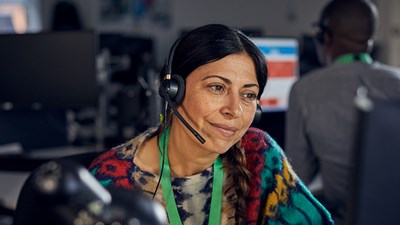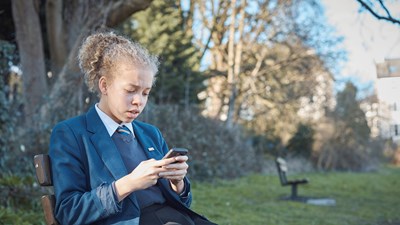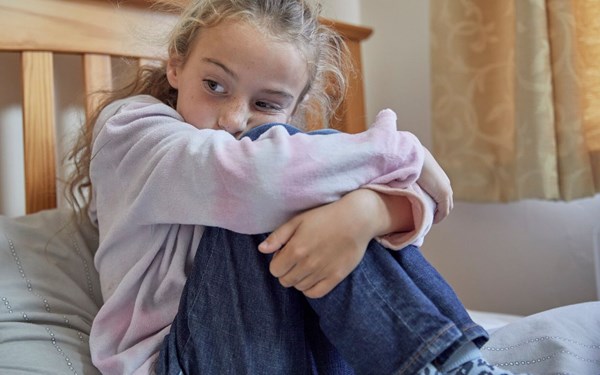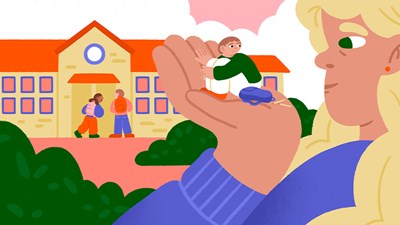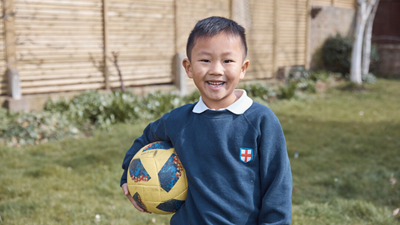What is bullying?
Bullying is intentional behaviour that hurts someone else. It includes name calling, hitting, pushing, spreading rumours, threatening or undermining someone.
It can happen anywhere – at school, at home or online. It's usually repeated over a long period of time and can hurt a child both physically and emotionally.
Bullying can take different forms. It could include:
- physical bullying: hitting, slapping or pushing someone
- verbal bullying: name calling, gossiping or threatening someone
- non-verbal abuse: hand signs or text messages
- emotional abuse: threatening, intimidating or humiliating someone
- exclusion: ignoring or isolating someone
- undermining, constant criticism or spreading rumours
- controlling or manipulative behaviour
- making silent, hoax or abusive calls.
The following types of bullying are also hate crimes:
- racial, sexual, transphobic or homophobic bullying
- bullying someone because they have a disability.
What is cyberbullying?
Cyberbullying is bullying that takes place online. Unlike bullying offline, online bullying can follow the child wherever they go, via social networks, gaming and mobile phone. A person can be bullied online and offline at the same time.
Cyberbullying can include:
- sending threatening or abusive text messages
- creating and sharing embarrassing images or videos
- trolling – the sending of menacing or upsetting messages on social networks, chat rooms or online games
- excluding children from online games, activities or friendship groups
- shaming someone online
- setting up hate sites or groups about a particular child
- encouraging young people to self-harm
- voting for or against someone in an abusive poll
- creating fake accounts, hijacking or stealing online identities to embarrass a young person or cause trouble using their name
- sending explicit messages, also known as sexting
- pressuring children into sending sexual images or engaging in sexual conversations.
You can find out more about cyberbullying on our Online Abuse page.
Worried about a child?
Contact our Helpline by calling 0808 800 5000 or emailing [email protected].
Signs of bullying
No single sign will indicate for certain that your child's being bullied, but watch out for:
- belongings getting 'lost' or damaged
- physical injuries, such as unexplained bruises
- being afraid to go to school, being mysteriously 'ill' each morning, or skipping school
- a change in how they are doing at school, including a dip in grades or not handing homework in
- asking for, or stealing, money (to give to whoever's bullying them)
- a change in behaviour, including being nervous, losing confidence, or becoming distressed and withdrawn
- a change in eating or sleeping habits
- bullying others.
Effects of bullying
The effects of bullying can last into adulthood. At its worst, bullying has driven children and young people to self-harm and even suicide.
Children who are bullied:
- may develop mental health problems like depression and anxiety
- have fewer friendships
- aren't accepted by their peers
- are wary and suspicious of others
- have problems adjusting to school, and don't do as well.
All children who are affected by bullying can suffer harm – whether they are being bullied, bully others or witness bullying. It's important all children get support if they are being bullied, or if they are displaying bullying behaviours towards others.
Who's at risk
Any child can be bullied for any reason. If a child is seen as different in some way, or seen as an easy target they can be more at risk.
This might be because of their:
- race or ethnic background
- gender
- sexual orientation.
Or it could be because they:
- appear anxious or have low self-esteem
- lack assertiveness
- are shy or introverted.
Popular or successful children are also bullied, sometimes because others are jealous of them. Sometimes a child's family circumstance or home life can be a reason for someone bullying them.
Disabled children can experience bullying because they seem an easy target and less able to defend themselves.
Support for children
We understand how difficult it is for children to talk about bullying. Whether it's happening now or happened in the past, Childline can be contacted 24/7. Calls to 0800 1111 are free and confidential. Children can also contact Childline online.
Childline has lots of advice about different types of bullying and a tool to support with the impact of bullying.
Childline Voice Box videos: practical advice and support for young people
Prevent bullying
There are steps we can all take to keep children and young people safe from bullying.
Be available for your child to talk to you about their worries and make sure they know where they can go to for support. That could be yourself, a teacher they trust or Childline.
You can ask your child's school to book a free Speak out Stay safe assembly for primary school children. Our specially trained staff and volunteers hold assemblies and workshops, covering topics like bullying and abuse, but without using any scary words or adult language.
If your child has bullied someone
If you find out your child has done something to hurt someone else, you’re likely to feel angry, disappointed or any number of other strong emotions.
Explain that what they’re doing is unacceptable. Children and young people don’t always realise what they’re doing is bullying, or understand how much their actions have hurt someone.
- Explain to your child how bullying can make people feel. Childline has lots of great advice specially designed for children and young people.
- Let them know that what they’re doing is unacceptable. Children and young people don’t always realise what they’re doing is bullying, or understand how much their actions have hurt someone.
- Help them realise how what they’ve done will have affected the other person. You could ask them how they think the other child is feeling, and to remember how they’ve felt when someone has said or done something unkind to them.
- Explain what you’re going to do next, such as telling their school, and what you expect your child to do now.
- Ask them whether they have any questions about why their actions need to change.
- Monitor your child's behaviour and have ongoing conversations with them about how they treat others. Praise them when they show positive behaviours, but don't be afraid to reinforce expectations too.
